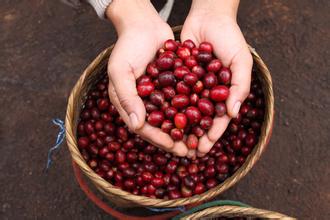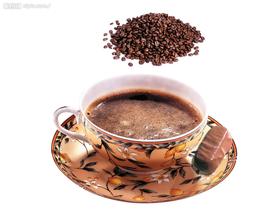Historical Price, Brand and Flavor description of Coffee grown in Vietnam
Historical Price, Brand and Flavor description of Coffee grown in Vietnam
In the field of coffee processing, there have been some dilapidated processing plants since 1975, and there are several processing plants in northern Tongjiao, Fukui and other places, whose equipment was made in East Germany from 1960 to 1962. In the south, the old factories left by former landowners such as ROSSI,DELPHANTE are also small. While expanding the coffee planting area, Yue also began to build new coffee processing plants, first producing some stand-alone equipment, and later imitating the production line according to the HANGXA style, the main manufacturers are the Haiphong May 1 Machinery Factory, the Ministry of Industry A74 Plant in Shoude, Ho Chi Minh City, and so on. In recent years, many companies and farms in Vietnam have imported new processing plants with relatively complete equipment from Germany and Brazil, and imported more than a dozen sets of coffee processing production lines from PINHALENSE of Brazil. Since then, more and more factories began to imitate and improve their own production of Brazilian equipment. In recent years, the processing capacity of Vietnamese coffee has been greatly improved, which can guarantee the export of 150000 to 200000 tons of coffee kernels per year. In addition, there are many enterprises with inadequate equipment, which only rely on a few single machines for processing.
Nhan graduated in 1967 and returned to Vietnam to start working at the PhuQuy Rainforest Agricultural Research Station (PhuQuayTropicalCropResearchStation) in Nghe. The Tropical Rainforest Agricultural Research Station, a research organization under the Department of Agriculture, went on to work with the Vietnamese government to devise plans for how to rebuild war-torn Vietnam. Vietnam had a population of about 70 million at that time and most of the people needed to work. The Vietnamese government quickly identified two main reconstruction priorities, education and work. "the government asked everyone to come up with a product that could help society grow," Nhan recalled. "I had studied all the rain forest products when I was studying in China, so I began to look for products that could be produced locally and exported. Coffee is an advantageous product because we have many countries to cooperate with, and there are a lot of basalt laterite in the country, and the only thing that is lacking is agricultural manpower. " "We also know that we need a lot of educators to rebuild the country after the war, but the question is what if young people don't want to stay in school," Nhan added. "Schools and universities continue to open during the war.

Important Notice :
前街咖啡 FrontStreet Coffee has moved to new addredd:
FrontStreet Coffee Address: 315,Donghua East Road,GuangZhou
Tel:020 38364473
- Prev

Introduction to the operation steps for the different use of cleaning tablets and detergent tablets of Yuri coffee machine
The operation procedure of the difference between the Yuri coffee machine cleaning tablet and the detergent tablet the cleaning of the coffee residue from the brewing head can separate the filter net and the water separation copper block on the brewing head. The filter net is the part that comes into direct contact with the coffee powder every time you brew the coffee. Because the coffee powder is pressed, the coffee liquid will flow out of the powder bowl only when it is pressed to a certain extent, so before oozing.
- Next

Introduction to the description of Coffee Flavor in Latin American Coffee Manor
Latin American Coffee Manor characteristics Coffee Flavor description in various countries is suitable for roasting: City/Full city city can roast it a little deeper if it has a preference for heavy flavor. Most people think of El Salvador as a place with frequent wars, but it is true that years of civil war have prevented El Salvador's coffee beans from being on the international market.
Related
- What documents do you need to go through to open a coffee shop? coffee shop coffee shop certificate processing process
- How to purchase Coffee beans in small Cafe how to choose a suitable supplier for domestic Coffee supply Company
- How to drink Starbucks Fragrance White Coffee? how to make Australian White Coffee? what Italian coffee beans are recommended?
- The Story of Flora Coffee: the name of Flora Coffee Bean and the implication of the Flowers on Florna Coffee
- How much does a cup of coffee cost? How much is the profit of a cup of coffee? What is the profit of the coffee shop in a year?
- Yunnan small Coffee, known as "fragrant Coffee", introduces the characteristics of Alpine Arabica Coffee producing areas in Yunnan, China
- 2023 latest Starbucks full menu price list how much is a cup of Starbucks coffee what is better to drink the most popular hot and cold drinks recommended
- Starbucks different kinds of Coffee Price list Starbucks menu 2023 Top Ten Best drinks in Starbucks
- Starbucks Spring praise Comprehensive matching Coffee Bean theme Story Packaging implication and taste description
- The cost of a cup of coffee latte American coffee cost price and selling price

